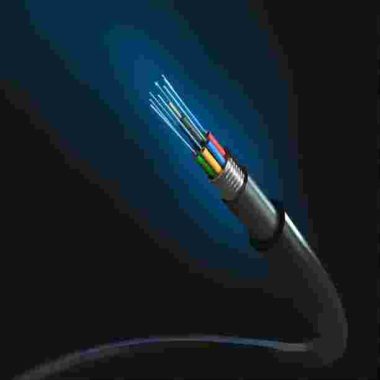Today we will talk about data centers in fiber optics, which are classified by different sizes, purposes, ownership, levels, and deployment models to help us get the right solution. So if you want to know more about this knowledge, let’s take a look at the summary introduction of data center levels!
Data Center Level Classification
Based on Size
- 1. Small Data Center: Usually created to meet the demands of organizations or small businesses with little need for IT infrastructure. Compared to larger data centers, they could have lower power and cooling capacities and occupy a smaller physical space.

- 2. Mid-sized Data Center: Ideal for medium-sized businesses with modest requirements for IT infrastructure. These data centers might be able to accommodate a wider variety of equipment, have a bigger footprint, and have higher power and cooling capacities.
 It’s crucial to remember that a mid-sized data center’s exact specs can change depending on the needs and available resources of the company. A mid-sized data center’s dimensions and features might vary depending on the enterprise.
It’s crucial to remember that a mid-sized data center’s exact specs can change depending on the needs and available resources of the company. A mid-sized data center’s dimensions and features might vary depending on the enterprise. - 3. Enterprise Data Center: The vast IT infrastructure needs of large enterprises are supported by large-scale data centers. They frequently have large physical footprints, strong cooling and power systems, and numerous redundancies for high availability.
- Large companies depend heavily on their enterprise data centers, which demand high infrastructure, technology, and continuous maintenance costs. They offer the framework needed to handle large-scale network connectivity, data storage, and mission-critical applications.
- 4. Modular Data Center: The data center is composed of modular blocks that can be readily expanded from one server room to meet infinite requirements. This is made possible by the growth of individual module blocks.

- 5. Container Data Center: The data center is composed of modular blocks that can be readily expanded from one server room to meet infinite requirements. This is made possible by the growth of individual module blocks.
Based on Purpose
- 1. General-Purpose Data Center: Multiple IT services and applications are intended to be supported by these data centers. Because of their adaptability, they can handle a wide range of needs, including hosting servers, networking hardware, storage systems, and other applications.
- 2. Specialized Data Center: Designed to meet specialized needs, such as those of high-performance computing (HPC), research, or particular industries like banking or healthcare. Because they cater to the specific needs of the businesses or applications they are targeting, these data centers frequently feature customized architecture, equipment, and security measures.
Based on Ownership
- 1. Enterprise-Owned Data Center: Owned and run by a company to satisfy its IT requirements. The infrastructure is directly controlled by the company thanks to these data centers, which enable customized settings and security measures that meet particular needs.
- 2. Colocation Data Center: Owned and run by a company to satisfy its IT requirements. The infrastructure is directly controlled by the company thanks to these data centers, which enable customized settings and security measures that meet particular needs.
- 3. Cloud Data Center: Operated to provide clients with cloud computing resources and services by cloud service providers. Users may centrally consume processing power, storage, and other services as needed because of cloud data’s scalability and on-demand access to virtualized resources.
Based on Tier Level
The Uptime Institute’s Tier Standard is a set of criteria and classifications to evaluate and compare the infrastructure and performance of data centers.
- 1. Tier I: Basic Capacity A Tier I data center provides the basic capacity for power and cooling infrastructure to support the IT load. It has a single, non-redundant distribution path and may have unplanned downtime, as it does not necessarily have redundant components. Maintenance activities or failures can lead to disruptions.
- 2. Tier II: Redundant Capacity A Tier II data center includes redundant capacity components to enhance safety and reduce the risk of disruptions. This tier includes everything in Tier I plus additional redundant infrastructure such as UPS modules, cooling systems, and generators. While maintenance can often be performed without shutting down the IT load, the data center may still experience downtime in the event of unplanned activities or failures.
- 3. Tier III: Concurrently Maintainable A Tier III data center has multiple paths for power and cooling, with systems set up to allow any component to be removed and replaced (maintenance-wise) without impacting the IT operations. Tier III includes all components found in Tier II, with the addition of multiple distribution paths that are concurrently maintainable, providing better protection against downtime.
- 4. Tier IV: Fault Tolerant A Tier IV data center provides the highest level of fault tolerance and redundancy. It has all the features of Tier III, plus it is built to withstand a single unplanned event such as a fire, explosion, or system failure without any impact on the operational continuity. It typically includes multiple independent, physically isolated systems that provide redundant capacity and distribution paths, each with the ability to be isolated and removed without impacting the IT and critical load.

Based on the Deployment Model
- 1. On-Premises Data Center: Constructed and managed on the premises of an organization, offering immediate control over the facilities. There is more control over security, privacy, and customization in on-premises data centers.
- 2. Co-located Data Center: Sharing the physical space and infrastructure with other businesses while storing IT infrastructure in a third-party facility. Reduced capital expenditure, pooled resources, and access to dependable infrastructure are some advantages of co-located data centers.
- 3. Cloud Data Center: Using cloud service providers’ virtualized infrastructure and online services. Cloud data centers allow businesses to quickly provide resources and take advantage of cloud-based services because they provide scalability, flexibility, and pay-as-you-go models.
 Data centers can fit into more than one category depending on its attributes, and these classifications and categories are not mutually exclusive. Furthermore, a data center’s classification may change based on regional customs and various industry standards.
Data centers can fit into more than one category depending on its attributes, and these classifications and categories are not mutually exclusive. Furthermore, a data center’s classification may change based on regional customs and various industry standards. -
Conclusion
- If you want to get your hands on high-quality and reliable fiber optic products, check out FiberLife. It’s a leading supplier of fiber optic cables, optical amplifiers, optical switches, and many other networking solutions. The company has worked with tech giants including Amazon, Apple, HP, and many educational institutes like MIT and Harvard, making them the go-to fiber optic supplier worldwide.
-
Visit the website for more details or contact them right away.






